
How to Use TB6612FNG Motor Driver: Examples, Pinouts, and Specs
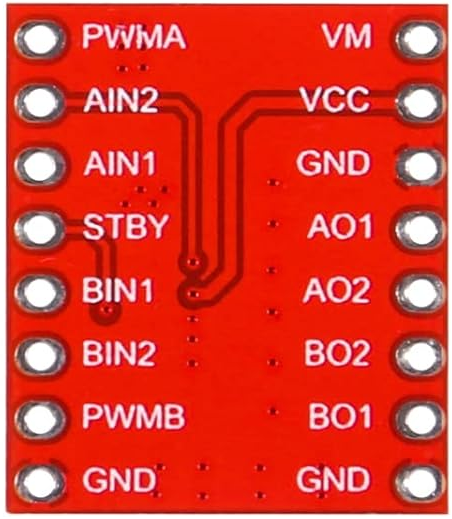
 Design with TB6612FNG Motor Driver in Cirkit Designer
Design with TB6612FNG Motor Driver in Cirkit DesignerIntroduction
The TB6612FNG is a dual H-bridge motor driver IC designed to control two DC motors or one stepper motor. It supports PWM (Pulse Width Modulation) for precise speed control and direction management. With built-in thermal shutdown protection, overcurrent protection, and low standby current, the TB6612FNG is a reliable choice for robotics, automation, and other motor control applications.
Explore Projects Built with TB6612FNG Motor Driver
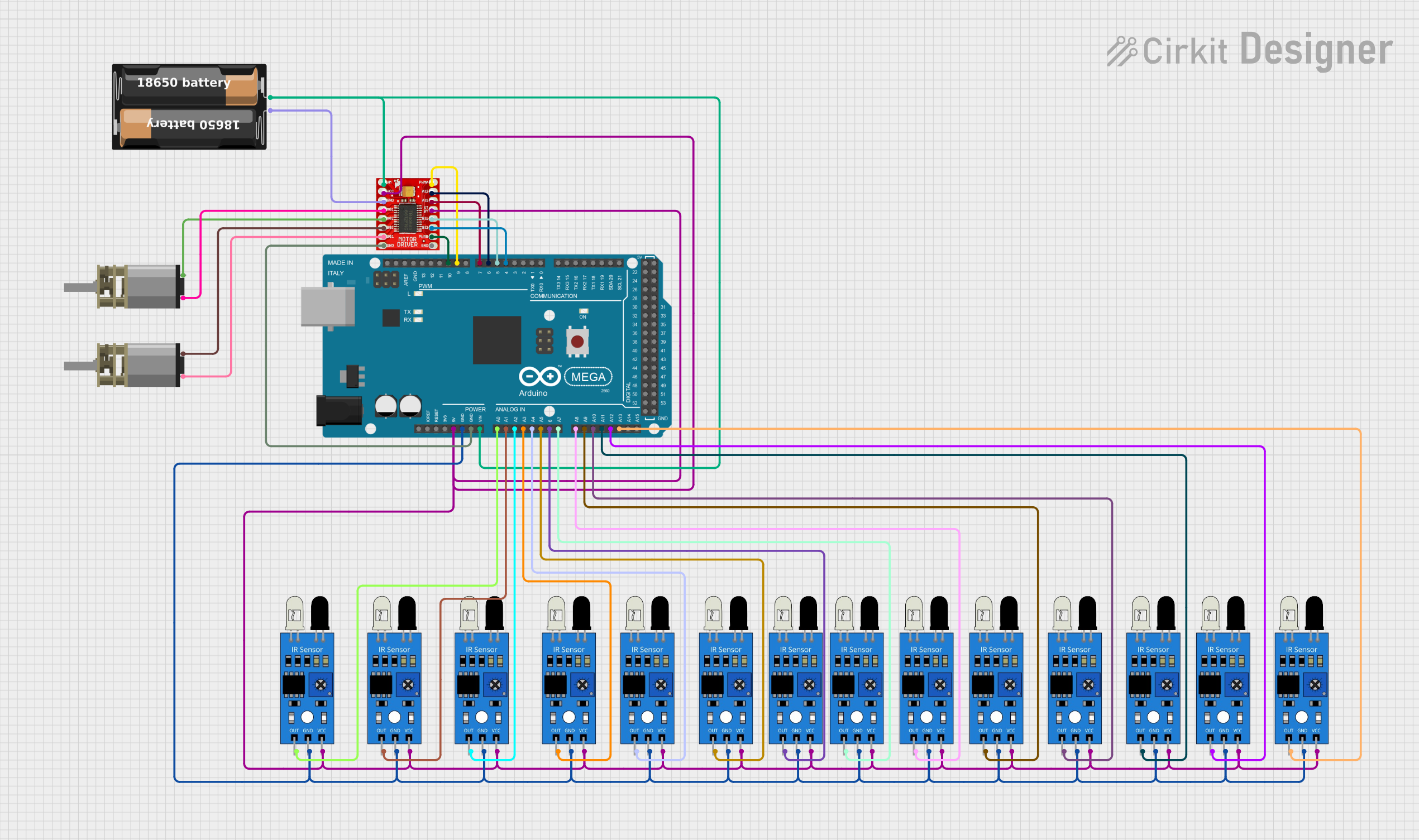
 Open Project in Cirkit Designer
Open Project in Cirkit Designer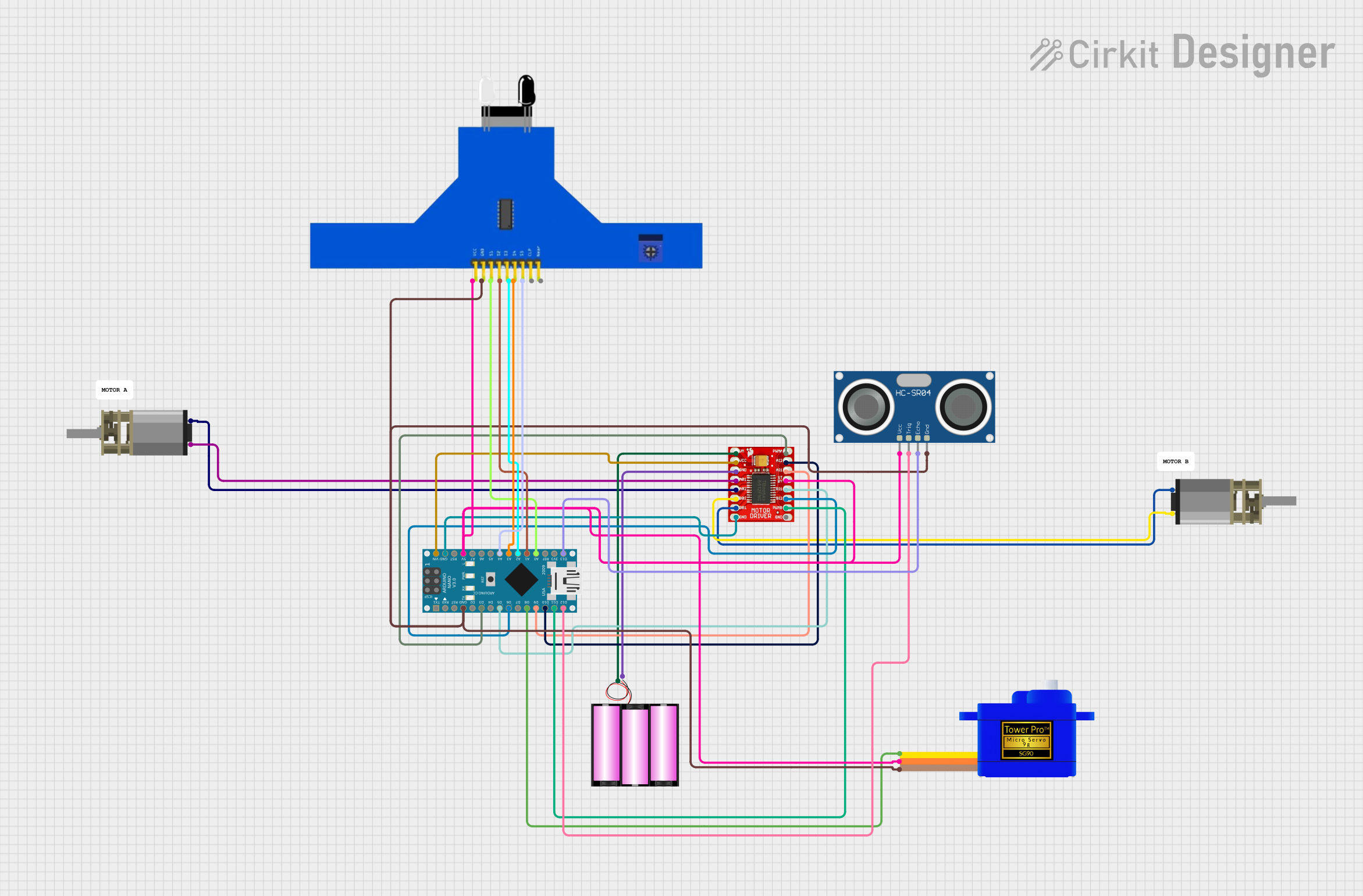
 Open Project in Cirkit Designer
Open Project in Cirkit Designer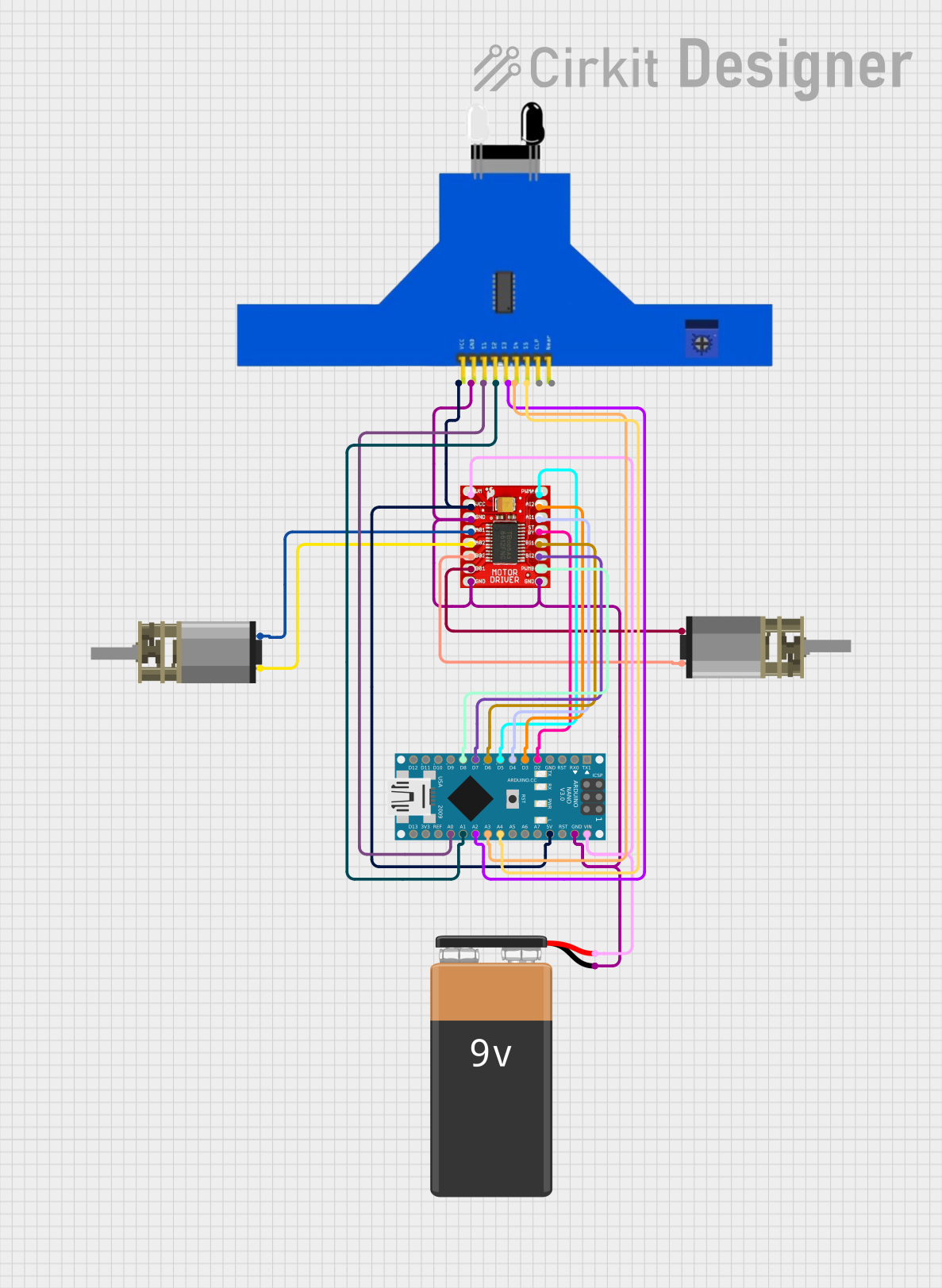
 Open Project in Cirkit Designer
Open Project in Cirkit Designer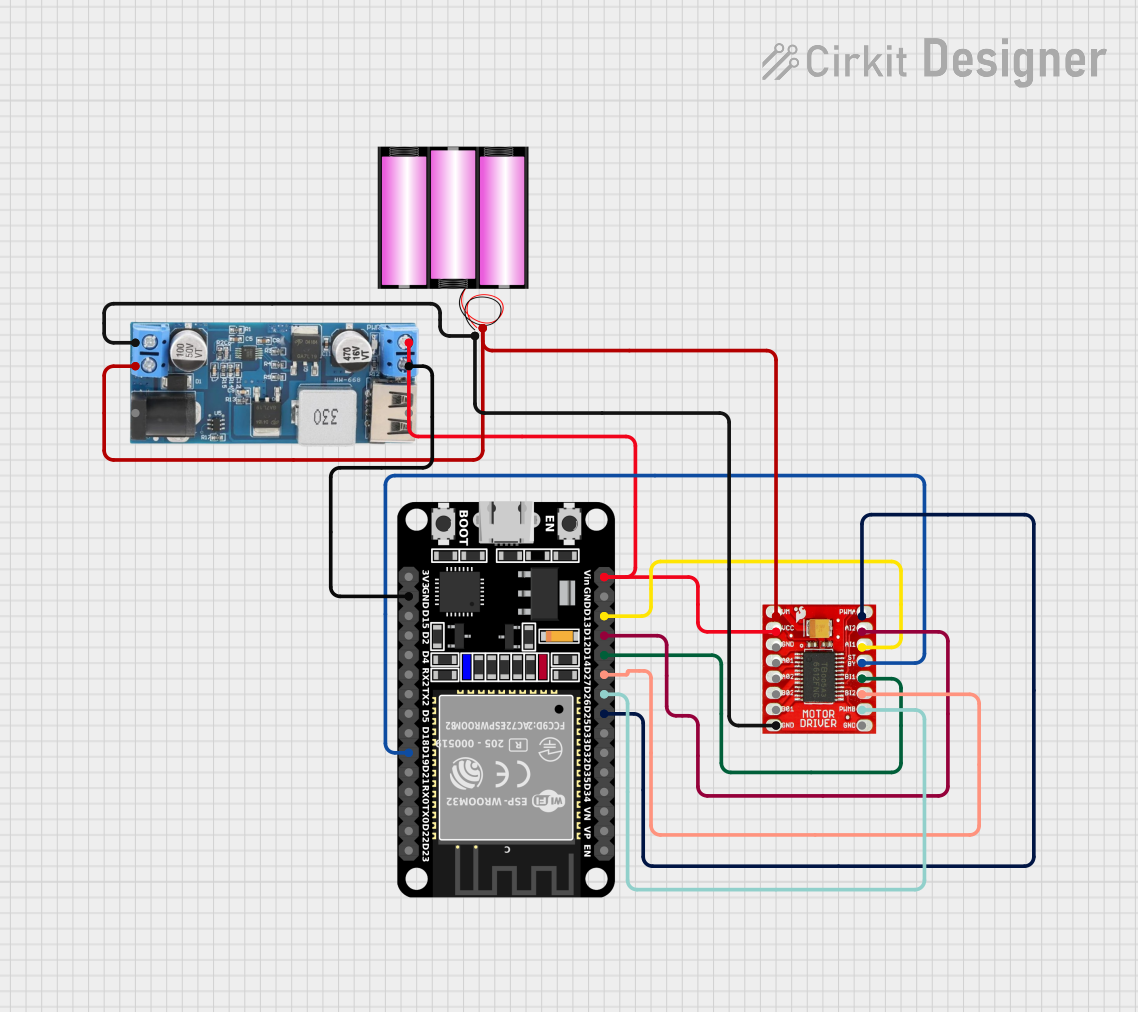
 Open Project in Cirkit Designer
Open Project in Cirkit DesignerExplore Projects Built with TB6612FNG Motor Driver

 Open Project in Cirkit Designer
Open Project in Cirkit Designer
 Open Project in Cirkit Designer
Open Project in Cirkit Designer
 Open Project in Cirkit Designer
Open Project in Cirkit Designer
 Open Project in Cirkit Designer
Open Project in Cirkit DesignerCommon Applications
- Robotics (e.g., controlling wheels or arms)
- Automated conveyor systems
- DIY projects involving DC or stepper motors
- Educational electronics kits
- Small-scale industrial automation
Technical Specifications
Key Technical Details
| Parameter | Value |
|---|---|
| Operating Voltage (Vcc) | 2.7V to 5.5V |
| Motor Voltage (VM) | 4.5V to 13.5V |
| Output Current (per channel) | 1.2A (continuous), 3.2A (peak) |
| Control Interface | PWM and digital signals |
| Standby Current | 1 µA (typical) |
| Built-in Protections | Thermal shutdown, overcurrent |
| Operating Temperature Range | -20°C to +85°C |
Pin Configuration and Descriptions
The TB6612FNG comes in a 16-pin package. Below is the pinout and description:
| Pin Number | Pin Name | Description |
|---|---|---|
| 1 | PWMA | PWM input for Motor A |
| 2 | AIN1 | Input 1 for Motor A (direction control) |
| 3 | AIN2 | Input 2 for Motor A (direction control) |
| 4 | STBY | Standby control (active HIGH to enable the IC) |
| 5 | Vcc | Logic power supply (2.7V to 5.5V) |
| 6 | AO1 | Output 1 for Motor A |
| 7 | AO2 | Output 2 for Motor A |
| 8 | VM | Motor power supply (4.5V to 13.5V) |
| 9 | BO2 | Output 2 for Motor B |
| 10 | BO1 | Output 1 for Motor B |
| 11 | GND | Ground |
| 12 | Vcc | Logic power supply (connected internally to Pin 5) |
| 13 | BIN2 | Input 2 for Motor B (direction control) |
| 14 | BIN1 | Input 1 for Motor B (direction control) |
| 15 | PWMB | PWM input for Motor B |
| 16 | NC | No connection |
Usage Instructions
How to Use the TB6612FNG in a Circuit
Power Connections:
- Connect
Vccto a 3.3V or 5V logic power supply. - Connect
VMto the motor power supply (4.5V to 13.5V). - Connect
GNDto the ground of the power supply.
- Connect
Motor Connections:
- Connect the motor terminals to
AO1andAO2for Motor A, andBO1andBO2for Motor B.
- Connect the motor terminals to
Control Signals:
- Use
AIN1andAIN2to control the direction of Motor A, andBIN1andBIN2for Motor B. - Provide PWM signals to
PWMAandPWMBto control the speed of Motor A and Motor B, respectively. - Set
STBYHIGH to enable the IC. Pull it LOW to put the IC in standby mode.
- Use
Direction Control:
- Set
AIN1HIGH andAIN2LOW to rotate Motor A in one direction. - Set
AIN1LOW andAIN2HIGH to rotate Motor A in the opposite direction. - Similarly, use
BIN1andBIN2for Motor B.
- Set
PWM Speed Control:
- Apply a PWM signal (0-100% duty cycle) to
PWMAorPWMBto control the speed of the motors.
- Apply a PWM signal (0-100% duty cycle) to
Example: Using TB6612FNG with Arduino UNO
Below is an example code to control two DC motors using the TB6612FNG and an Arduino UNO:
// Pin definitions for Motor A
const int AIN1 = 7; // Direction control pin 1 for Motor A
const int AIN2 = 8; // Direction control pin 2 for Motor A
const int PWMA = 9; // PWM speed control pin for Motor A
// Pin definitions for Motor B
const int BIN1 = 4; // Direction control pin 1 for Motor B
const int BIN2 = 5; // Direction control pin 2 for Motor B
const int PWMB = 6; // PWM speed control pin for Motor B
// Standby pin
const int STBY = 10; // Standby control pin
void setup() {
// Set all pins as outputs
pinMode(AIN1, OUTPUT);
pinMode(AIN2, OUTPUT);
pinMode(PWMA, OUTPUT);
pinMode(BIN1, OUTPUT);
pinMode(BIN2, OUTPUT);
pinMode(PWMB, OUTPUT);
pinMode(STBY, OUTPUT);
// Enable the motor driver by setting STBY HIGH
digitalWrite(STBY, HIGH);
}
void loop() {
// Example: Rotate Motor A forward at 50% speed
digitalWrite(AIN1, HIGH);
digitalWrite(AIN2, LOW);
analogWrite(PWMA, 128); // 50% duty cycle (128 out of 255)
// Example: Rotate Motor B backward at 75% speed
digitalWrite(BIN1, LOW);
digitalWrite(BIN2, HIGH);
analogWrite(PWMB, 192); // 75% duty cycle (192 out of 255)
delay(2000); // Run motors for 2 seconds
// Stop both motors
analogWrite(PWMA, 0);
analogWrite(PWMB, 0);
delay(2000); // Wait for 2 seconds before repeating
}
Important Considerations
- Ensure that the motor power supply voltage (
VM) matches the motor's rated voltage. - Do not exceed the maximum continuous current rating of 1.2A per channel.
- Use appropriate decoupling capacitors between
VMandGNDto reduce noise. - Avoid running the IC at high currents for extended periods to prevent overheating.
Troubleshooting and FAQs
Common Issues and Solutions
Motors Not Running:
- Ensure
STBYis set HIGH to enable the IC. - Check the power supply connections for
VccandVM. - Verify that the PWM signals are being generated correctly.
- Ensure
Motor Running in the Wrong Direction:
- Swap the logic levels of
AIN1andAIN2(orBIN1andBIN2) to reverse the direction.
- Swap the logic levels of
Overheating:
- Ensure the current draw of the motors does not exceed 1.2A per channel.
- Add a heatsink or improve ventilation if the IC gets too hot.
No Response to PWM Signals:
- Verify that the PWM frequency is within the recommended range (typically 20kHz or lower).
- Check the connections to the
PWMAandPWMBpins.
FAQs
Q: Can the TB6612FNG drive stepper motors?
A: Yes, the TB6612FNG can drive a bipolar stepper motor by controlling the two H-bridges with appropriate step sequences.
Q: What happens if the IC overheats?
A: The TB6612FNG has built-in thermal shutdown protection. It will automatically disable the outputs if the temperature exceeds safe limits.
Q: Can I use the TB6612FNG with a 3.3V microcontroller?
A: Yes, the TB6612FNG supports logic levels as low as 2.7V, making it compatible with 3.3V microcontrollers.